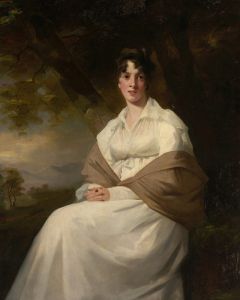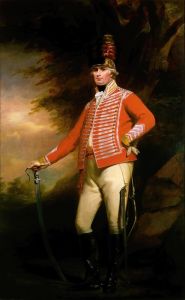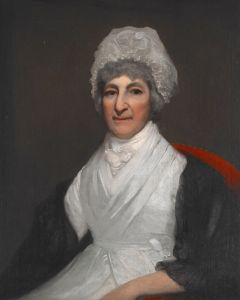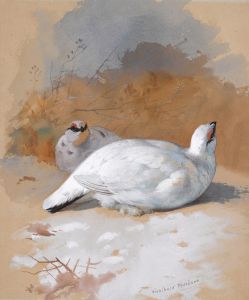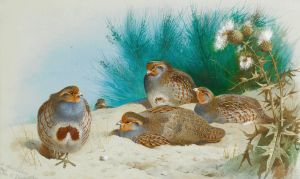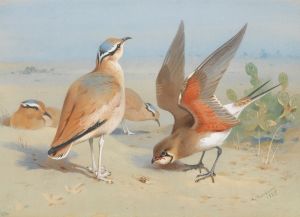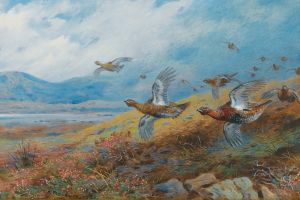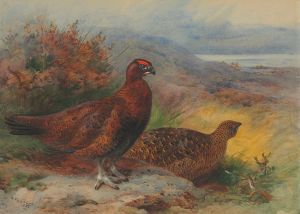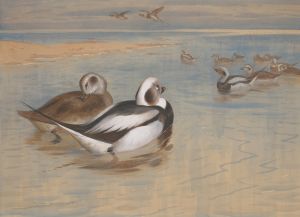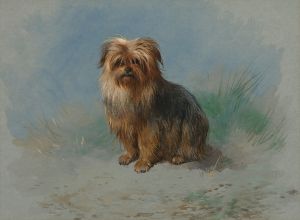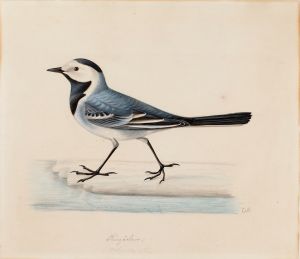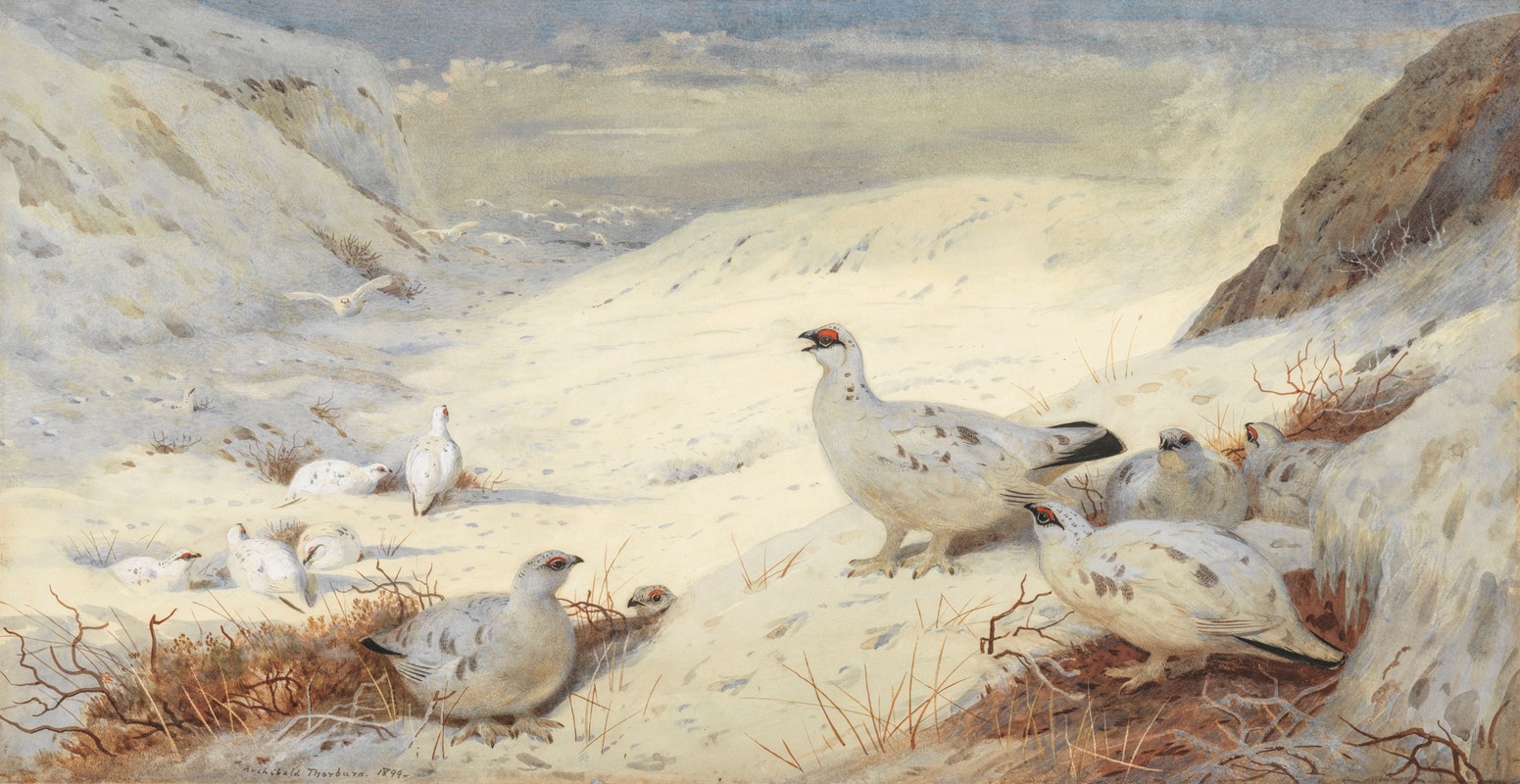
Ptarmigan in winter plumage signed and dated ‘Archibald Thorburn. 1899
A hand-painted replica of Archibald Thorburn’s masterpiece Ptarmigan in winter plumage signed and dated ‘Archibald Thorburn. 1899, meticulously crafted by professional artists to capture the true essence of the original. Each piece is created with museum-quality canvas and rare mineral pigments, carefully painted by experienced artists with delicate brushstrokes and rich, layered colors to perfectly recreate the texture of the original artwork. Unlike machine-printed reproductions, this hand-painted version brings the painting to life, infused with the artist’s emotions and skill in every stroke. Whether for personal collection or home decoration, it instantly elevates the artistic atmosphere of any space.
Archibald Thorburn (1860–1935) was a renowned Scottish artist and bird illustrator, celebrated for his detailed and lifelike depictions of wildlife, particularly birds. One of his notable works is "Ptarmigan in Winter Plumage," signed and dated 1899. This painting exemplifies Thorburn's exceptional skill in capturing the essence of his avian subjects within their natural habitats.
Thorburn was born in Lasswade, near Edinburgh, and developed an early interest in art and nature, likely influenced by his father, Robert Thorburn, who was a miniaturist to Queen Victoria. Archibald Thorburn's career flourished during the late 19th and early 20th centuries, a period when interest in ornithology and natural history was burgeoning. His work was characterized by meticulous attention to detail and a deep understanding of his subjects, which he often observed in the wild.
"Ptarmigan in Winter Plumage" is a testament to Thorburn's dedication to realism and his ability to convey the subtle beauty of birds in their natural environments. The ptarmigan, a bird native to the cold, mountainous regions of Scotland and other parts of the Northern Hemisphere, is depicted in its winter plumage, which is predominantly white. This seasonal adaptation provides camouflage against the snow, protecting the bird from predators.
Thorburn's painting captures the ptarmigan in a serene, snowy landscape, highlighting the bird's adaptation to its environment. The use of color and light in the painting is particularly noteworthy, as Thorburn skillfully contrasts the white plumage of the ptarmigan against the muted tones of the winter landscape. This contrast not only emphasizes the bird's natural camouflage but also showcases Thorburn's ability to create depth and texture in his work.
Throughout his career, Thorburn was known for his fieldwork, often sketching birds in their natural habitats before completing his paintings in the studio. This practice allowed him to accurately portray the behavior and characteristics of his subjects, lending authenticity to his work. His dedication to observing wildlife in its natural setting is evident in "Ptarmigan in Winter Plumage," where the bird's posture and surroundings are rendered with precision and care.
Thorburn's contributions to ornithological art were significant, and his works were highly regarded by both art collectors and naturalists. He illustrated several important ornithological texts, including Lord Lilford's "Coloured Figures of the Birds of the British Islands" and "The Birds of the British Isles" by T. A. Coward. These publications further cemented his reputation as a leading bird artist of his time.
"Ptarmigan in Winter Plumage" remains an exemplary piece within Thorburn's body of work, reflecting his passion for wildlife and his exceptional artistic talent. His paintings continue to be celebrated for their beauty and accuracy, offering viewers a glimpse into the natural world through the eyes of one of history's most skilled wildlife artists. Archibald Thorburn's legacy endures, inspiring future generations of artists and naturalists alike.





